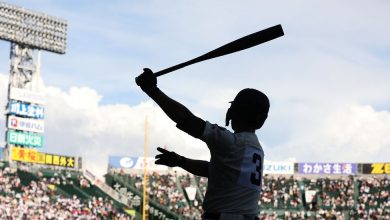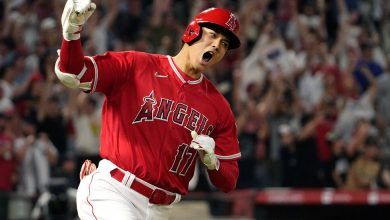‘The Gains That Could Be Made Would Be Enormous’

PHOENIX — When the 99-day work stoppage in Major League Baseball ended on March 10, the sport surged back to life. Delayed and truncated, spring training began within days. Free-agent signings and trades resumed almost instantly, and at a frenetic pace. Barred from team facilities during the lockout, players returned to clubhouses and fields.
Another familiar group was back at work: drug testers.
M.L.B.’s collective bargaining agreement — the five-year pact between the league and the players’ union that governs the sport — expired at 11:59 p.m. Eastern time on Dec. 1. So did the jointly negotiated drug agreement, which details, how testing occurs during the season and off-season, what substances are banned and suspension lengths. M.L.B.’s testing program began in 2003, got more stringent over time and is touted by officials as one of the best in sports.
But when the previous labor deal expired, M.L.B. Commissioner Rob Manfred enacted a lockout, freezing all transactions and interactions with players. Thus, Manfred said, without the legal authority to do so, the drug testing stopped — for the first time in two decades.
As soon as the new labor agreement was in place, drug testing resumed, but in a sport that has a long history with performance-enhancing drugs, doping and antidoping experts expressed concern that there was ample time for foul play. They said that three months was sufficient enough for a player to make significant physical gains that could last into the regular season and have the substances out of their system by the time testing restarted.
Baseball and performance-enhancing drugs have intertwined for much of the last 25 years. Some of the greatest players ever have been linked to them but never suspended (Barry Bonds and David Ortiz) and others have received harsh punishments for abuse (Alex Rodriguez and Manny Ramirez). Robinson Cano, once a star second baseman, is returning from his second suspension, a season-long unpaid penalty for testing positive for the synthetic steroid stanozolol.
With that history in mind, a period without testing has unsettled league officials, players, and doping and antidoping experts alike.
“Labor disputes make topics of concerns and this is another one,” Manfred said in early February, when M.L.B. and the players’ union were still far apart in negotiations.
Zack Britton, a Yankees relief pitcher and a top union official, said last week, “I hope guys respect that, just because there was a period of time where we weren’t being tested, doesn’t mean that they should go out and try to cheat and get an advantage over the other guys are doing it right. Kind of check your moral compass for a second.”
In a sport where a fraction of an inch can be the difference between safe and out, or ball and strike, and where big money is paid to those who prosper, an opportunity to gain an advantage without detection could be too hard to forgo.
The M.L.B. Lockout Comes to an End
- A New Agreement: After a contentious labor dispute, the league and players’ union struck a deal that would allow a full season to be played starting April 7.
- Looking Ahead: If the end of the lockout results in a better game, the acrimony will have been worth it, our national baseball columnist writes.
- A Frayed Relationship: M.L.B.’s commissioner called the deal “an olive branch.” Could it also be the start of better relations between the league and the players?
“Sports has learned the hard way,” Ross Tucker, a sports scientist in South Africa with a Ph.D. in exercise physiology, said in a recent phone interview. “Antidoping without out-of-competition testing is basically meaningless.”
He added later, “The analogy always was that antidoping was trying to shine the light into a dark tunnel, and just trying to catch that athlete at the moment that they walk through or drive through that dark tunnel. Now you’ve got basically a blackout.”
Tucker explained that some of the steroid hormones that athletes have used before, particularly when injected in high doses, take a long time to clear from the body and can be detected for weeks after. But if athletes are using oils or creams with low dosages, he said, their chances of evading detection could improve.
“If they do that, and then they get notice saying, ‘Right guys, you’re back in training in a week,’ they would be clean within a week of that notice,” Tucker said. “And if they’ve trained adequately over the period in which they’re doping, they will have improved their strength and their power and their muscle mass significantly. And as long as you keep training after that, you just defend it.”
Tucker said if athletes properly trained while using steroid hormones, the gains could last at least six months to maybe a year, if not longer. Over the course of the grueling 162-game M.L.B. regular season — not including weeks of spring training and a month of the playoffs — players can lose weight and muscle mass. But a player starting from a higher base level thanks to doping, Tucker said, would have an advantage over one who did not.
“You might start seeing some 50-home run seasons again,” said Victor Conte Jr., the central figure in the BALCO steroids scandal that linked the use of P.E.D.s to some of the country’s top professional baseball, football and track and field athletes. In 2005, he pleaded guilty to distributing steroids and money laundering.
 Credit…Lou Dematteis/Reuters
Credit…Lou Dematteis/Reuters‘You might start seeing some 50-home run seasons again.’
Victor Conte, the central figure in the Balco steroids scandal, discussing the lack of drug testing this off-season.
“In terms of performance enhancement, the gains that could be made would be enormous,” Conte added later. “So they would just do very intense explosive type weight training. And this develops fast-twitch muscle fiber, and the benefits that will come will carry over. It’s not just that they got this boost.”
Conte said that players could use small amounts of fast-acting testosterone — so-called micro dosing — applied through injections, creams, gels or even troches, dissolvable lozenges. Six to eight hours after applying a cream, Conte said the testosterone levels could be down to an allowable level.
And even if players get caught, Conte, who has repeatedly criticized M.L.B.’s testing program as not strict enough, said that cheating still pays. He pointed to the former outfielder Melky Cabrera, who was suspended in 2012 for 50 games for a positive testosterone test and still signed a $16 million contract that winter and then a $42 million deal two years later.
“I fall on the side of skeptics,” Tucker said. “My default is to assume that people will be doping. Not that every single player is going to.”
During the last normal M.L.B. regular season, in 2019, 11,619 tests were conducted (9,332 urine and 2,287 blood), with 2,058 coming during the off-season leading into the campaign, according to the yearly report issued by the drug program’s independent administrator.
The number of tests leading into the 2021 season, and during it, dropped to 8,436, with 551 having come in the off-season. Blood testing for human growth hormone, which began in 2012, was suspended because of the pandemic. Of all the tests ending with the 2021 World Series, only five players tested positive for P.E.D.s. The most prominent: Oakland Athletics outfielder Ramón Laureano, who was suspended without pay for 80 games for an anabolic steroid called nandrolone.
Going into the lockout, players had some clues, but not many, about the testing program. In a work stoppage guide provided to players and agents, the union wrote regarding the drug agreement: “Based on past precedent in the N.F.L. and N.H.L., it is unlikely that M.L.B. can administer J.D.A. testing during a work stoppage.”
Brent Suter, a Milwaukee Brewers pitcher and the team’s union representative, said the fear that some players might take advantage of the lockout crossed his mind when he heard jokes along the lines of, “Oh, geez, everyone is going to a show up juiced.”
But in reality, Suter said he didn’t have any legitimate concerns. Among his reasons: “If I were a doper, the lockout could have ended Jan. 15 out of nowhere and then you’re screwed. So there was risk for sure. You didn’t know it was going to last until March. Maybe you could have predicted it but you couldn’t know that for sure, so that’s a big risk to take.”
The day after the new labor agreement was struck, testing resumed. Two days later was the mandatory report date for spring training, during which every player is subject to at least one unannounced random test. As part of the new agreement, the 2022 season is expected to feature the most tests in the program’s history and blood testing for human growth hormone has resumed but with new technology.
Other sports have found ways to address potential loopholes created by testing absences. For example, according to the U.S. Anti-Doping Agency’s regulations, an Olympian who retires (and therefore is no longer tested) but then comes out of retirement must enter a testing pool for at least six months before being able to compete in major events.
In baseball, M.L.B. believes that once the testing program restarted, any detection of prohibited substances above the allowed levels are subject to discipline regardless of when they were used. And as in past instances, such as the Biogenesis scandal in 2013, M.L.B. could investigate any evidence of past use and suspend players without positive tests.
Andrew Miller, a top union official who announced his retirement on Thursday after pitching last year for the St. Louis Cardinals, said recently that baseball’s drug testing program was “pretty comprehensive” and “hopefully guys are scared to do something” during the lockout.
Britton said he was disappointed that a small side agreement wasn’t reached so that testing could have continued during the lockout. But he added that players who had the means and desire to do so can beat any test.
“Given the history of the sport and just sports in general, if somebody can gain an advantage, sometimes they’re willing to take the risk,” he said. “So I hope no one did it and, now that we’re back on testing, that those guys get caught and serve their punishment.”





